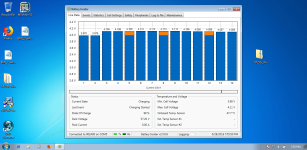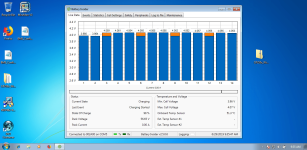Drunkskunk
100 GW
So I have a history with BMS going back to my start in Ebikes. My First two tried to murder me.
Back in like 2007 I nearly lost my house when a BMS failed and shorted out a lipo pack in my garage. Shortly after, I had a second BMS fail and ruin a second pack. I lost all faith in questionable automated devices with homicidal intentions and have manually monitored my batteries ever since.
But it's 2019. Times have changed. Live Journal is gone, and so is Myspace. Facebook is now only for old people. The iPhone was released and the entire smart phone culture became a thing. It's a brand new and improved world. So I figure BMS have probably improved a little.
I'm planning to put together a 12s pack. the first of what may be several packs. And I'd like to stop spending long afternoons hand monitoring cells as they charge, but I know nothing about them or where technology has taken them. Also, I haven't found a reliable source for BMS. everything I've found seems to be from eBay, Alibaba, Banggood, or Amazon. Not what I would consider reputable sources of devices that have tried to murder me in the past. I'm also running into a size issue. everything I've found in the 12s 35A range is the size of a desert plate, and I'm looking for something the size of a credit card. Do they even still exist this size now?
TL R summery: What is the state of the art in BMS design now, and where is a good place to to get reliable BMS?
R summery: What is the state of the art in BMS design now, and where is a good place to to get reliable BMS?
Back in like 2007 I nearly lost my house when a BMS failed and shorted out a lipo pack in my garage. Shortly after, I had a second BMS fail and ruin a second pack. I lost all faith in questionable automated devices with homicidal intentions and have manually monitored my batteries ever since.
But it's 2019. Times have changed. Live Journal is gone, and so is Myspace. Facebook is now only for old people. The iPhone was released and the entire smart phone culture became a thing. It's a brand new and improved world. So I figure BMS have probably improved a little.
I'm planning to put together a 12s pack. the first of what may be several packs. And I'd like to stop spending long afternoons hand monitoring cells as they charge, but I know nothing about them or where technology has taken them. Also, I haven't found a reliable source for BMS. everything I've found seems to be from eBay, Alibaba, Banggood, or Amazon. Not what I would consider reputable sources of devices that have tried to murder me in the past. I'm also running into a size issue. everything I've found in the 12s 35A range is the size of a desert plate, and I'm looking for something the size of a credit card. Do they even still exist this size now?
TL



